مستخلص البحث
يهدف البحث التعرف على:(اثر انموذج التعلم الخبراتي لروبين في تحصيل طلاب الصف الرابع العلمي في مادة الفيزياء ودافعيتهم الإبداعية)
ولتحقيق هدف البحث تم صوغ الفرضيتين الآتيتين:
-1لا يوجد فرق ذو دلالة احصائية عند مستوى (0.05) بين متوسط درجات طلاب المجموعة التجريبية اللذين سيدرسون على وفق انموذج التعلم الخبراتي لروبين ومتوسط درجات طلاب المجموعة الضابطة اللذين سيدرسون على وفق الطريقة الاعتيادية في اختبار التحصيل لمادة الفيزياء.
-2لا يوجد فرق ذو دلالة احصائية عند مستوى (0.05) بين متوسط درجات طلاب المجموعة التجريبية اللذين سيدرسون على وفق انموذج التعلم الخبراتي لروبين ومتوسط درجات طلاب المجموعة الضابطة الذين سيدرسون على وفق الطريقة الاعتيادية في مقياس الدافعية الابداعية.
استعمل الباحث التصميم التجريبي ذا الضبط الجزئي بالاختبار البعدي، ويتحدد مجتمع البحث بطلاب الصف الرابع العلمي للمدارس الثانوية والاعدادية الحكومية النهارية للبنين في مركز محافظة بغداد (الكرخ الثالثة) للعام الدراسي (2023-2024 ).
وبلغت عينة البحث (60) طالب، بواقع(30) طالبة للمجموعة التجريبية درسوا على وفق انموذج التعلم الخبراتي لروبين و(30) طالب للمجموعة الضابطة درسوا على وفق الطريقة الاعتيادية.
كوفئت المجموعتان بالمتغيرات(العمر الزمني والتحصيل السابق لمادة الفيزياء واختبار القدرات العقلية واختبار المعلومات السابقه ومقياس الدافعية الابداعية) كما اعد الباحث مستلزمات البحث المتمثلة بــ(تحديد المادة العلمية وصوغ الأغراض السلوكية وإعداد الخطط التدريسية).
واعد الباحث في دراسته اداتا البحث المتمثلة بـ(الاختبار تحصـيلي تكون من (40) فقرة اختيار من متعدد ذي أربعة بدائل, وتم حساب معامل التمييز والصعوبة وفعالية البدائل والثبات له, و مقياس الدافعية الابداعية تكون من (38) فقرة, وتم حساب معامل التمييز والصعوبة والصدق والثبات له.
بعد الانتهاء من تدريس المادة العلمية والذي استغرق الفصل الدراسي الاول من العام الدراسي بواقع (3حصص) اسبوعياً لكل مجموعة ، تم اجراء اختبار بعدي للمجموعتين في الادوات اعلاه، وتمت معالجة البيانات يدوياً وبالاعتماد على برنامج الحقيبة الاحصائية (SPSS) لإيجاد (اختبار التائي لعينتين مستقلتين, معاملات الصعوبة والتمييز, فعالية البدائل الخاطئة)، تم التوصل للنتائج الاتية:
- تفوق المجموعة التجريبية على المجموعة الضابطة في اختبار التحصيل و مقياس الدافعية الابداعية.
وفي ضوء نتائج البحث قدم الباحث عدداً من التوصيات والمقترحات.
Abstract
The research aims to identify: (The effect of Robin’s experiential learning model on fourth-grade students’ academic achievement in physics and their creative motivation)
To achieve the goal of the research, the following two hypotheses were formulated:
1-There is no statistically significant difference at the level of (0.05) between the average scores of the experimental group students who studied according to Rubin’s experiential learning model and the average scores of the control group students who studied according to the regular method in the achievement test for physics.
2-There is no statistically significant difference at the level (0.05) between the average scores of the experimental group students who studied according to Robin’s experiential learning model and the average scores of the control group students who studied according to the usual method in the creative motivation scale.
The researcher used a quasi-experimental design with partial control through the post-test, and the research population is determined by fourth-year science students in government secondary and middle school day schools for girls in the center of Baghdad Governorate (Al-Karkh 3) for the academic year (2022-2023).
The research sample was (60) female students, with (30) female students for the experimental group who studied according to Robin’s experiential learning model and (30) female students for the control group who studied according to the usual method.
The two groups were rewarded with the variables (chronological age, previous achievement in physics, mental abilities test, and creative motivation test) and the researcher also prepared the research requirements represented by (identifying the scientific material, formulating behavioral objectives, and preparing teaching plans).
In her study, the researcher prepared two research tools represented by (a summative test consisting of (40) multiple-choice items with four alternatives, and the coefficient of discrimination and difficulty and the effectiveness and stability of the alternatives were calculated, and a test of the creative motivation scale consisting of (38) items, and the coefficient of discrimination and difficulty were calculated His honesty and consistency.
After completing the teaching of the scientific subject, which took the first semester of the academic year at a rate of (3 classes) per week for each group, a post-test was conducted for the two groups on the above tools, and the data was processed manually and relying on the statistical package program (SPSS) to find (T-test for two independent samples, coefficients Difficulty and discrimination, effectiveness of wrong alternatives), the following results were reached:
- The experimental group outperformed the control group in the achievement test and the creative motivation test.
In light of the research results, the researcher presented a number of recommendations and proposals.